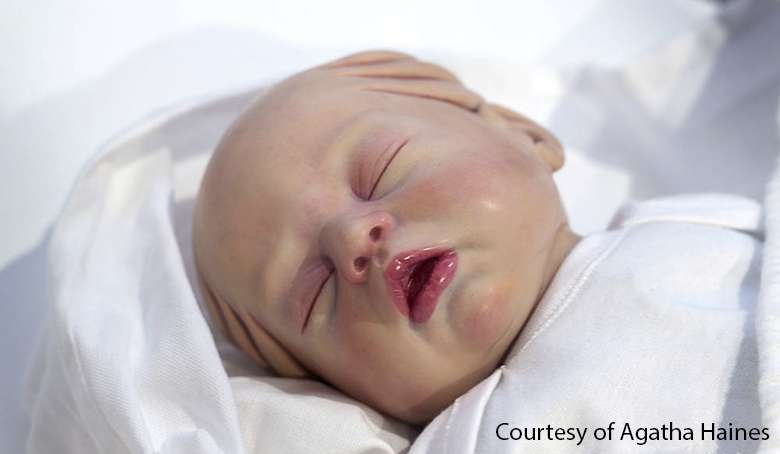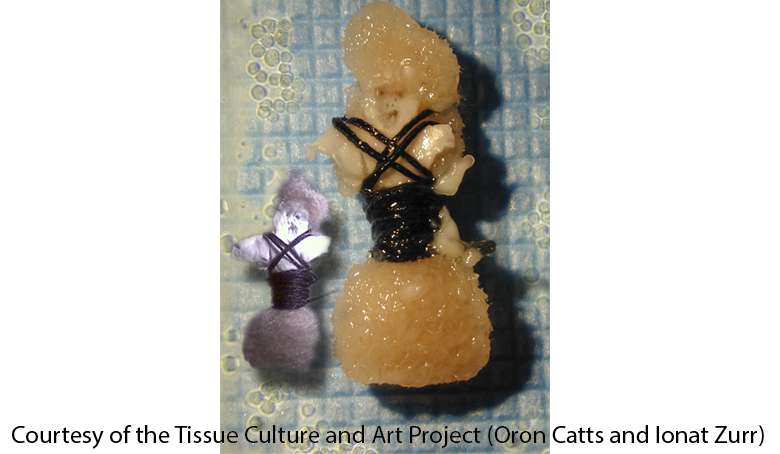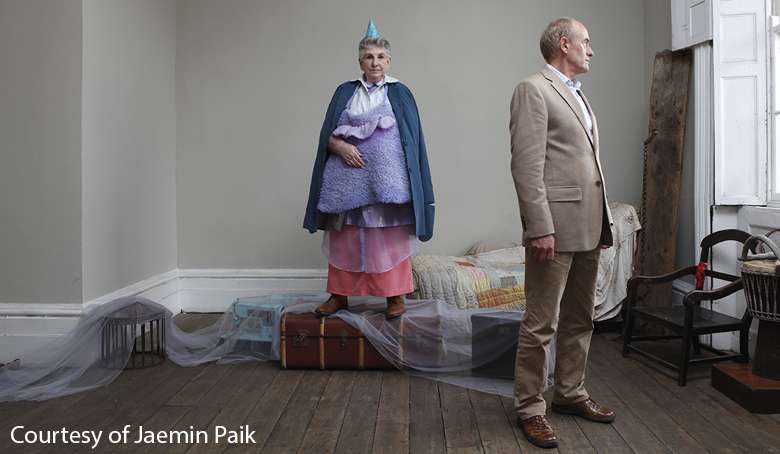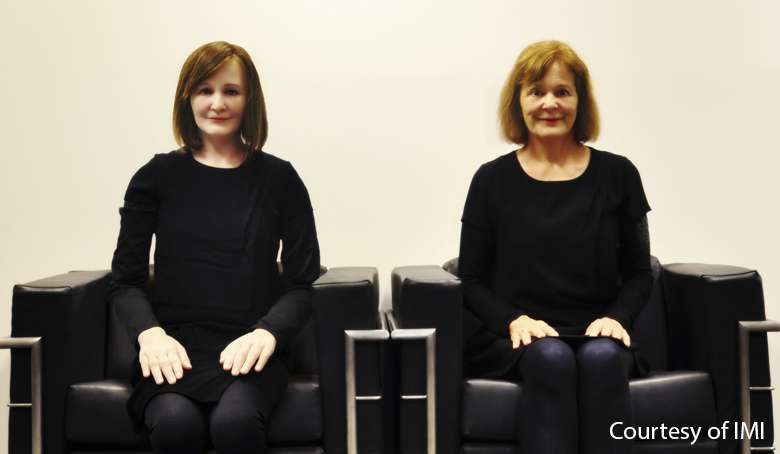What does it mean to create life, or extend a person's lifespan? This section of the exhibition explores the limits of human life and longevity. It includes a compelling and challenging work by designer, Agatha Haines, who has created five sculptures of human babies, each with a surgically implemented body modification.
Featuring: Agatha Haines, Zoe Papadopoulou and Anna Smajdor, Jaemin Paik, Julijonas Urbonas, James Auger and Jimmy Loizeau, Tissue Culture and Art Project (Oron Catts and Ionat Zurr).

Transfigurations, 2013
Agatha Haines
Agatha Haines studied Design Interactions at the Royal College of Art in London, and focuses on the design of the human body.
Her project, Transfigurations, consists of sculptures representing five babies, each with a surgically implemented body modification. Each modification is designed to solve a potential future problem for the baby, ranging from medical or environmental issues to social mobility issues.How far might parents go to give their child an advantage? What circumstances justify modifying a child’s body?


Semi-Loving Worry Dolls, 2000
Tissue Culture and Art Project
Oron Catts and Ionat Zurr
The Tissue Culture and Art Project was set up by artists Oron Catts and Ionat Zurr, working within a lab environment, to explore questions arising from the use of living tissues to create/grow “semi-living objects”.
The Semi-Living Worry Dolls were the first tissue engineered sculptures to be presented alive in a gallery in 2000.
Inspired by the Guatemalan worry dolls given to children to whisper their worries and concerns to, the Semi-Living Worry Dolls were handcrafted out of degradable polymers and surgical sutures. The dolls were then seeded with living cells that gradually replace the polymers.
Neither alive nor dead the Semi-Living Worry Dolls challenge our concept of life, consisting of animal cells sustained by a life-support machine.

When We All Live to 150, 2012
Jaemin Paik
Would you want to live to 150? There are a number of research groups who are currently trying to discover how to slow down or even reverse the processes of aging. Jaemin Paik is a Korean artist and designer, who studied Design Interactions at the Royal College of Art in London. In this project, she explores the consequences of life extension.
How would family life change if we all lived to 150 or beyond? With up to six generations living together, and the possibility of huge age gaps between siblings, the traditional model of the family would change dramatically, perhaps even becoming unsustainable with the burden of its large membership. When We All Live to 150 playfully imagines this scenario, and proposes some alternative family models, re-defining social structures to better suit long life expectancy. For example, in this future, marriage does not last till death do us part. Instead, to ease the pressure of forming a lifelong bond, marriage is a contract-based 30 year commitment that can be renewed or expire.


Nadine
Institute for Media Innovation (IMI) Nanyang Technological University (NTU) Singapore
Monday to Friday: 4pm - 6pm
Saturday to Sunday: 2pm - 6pm
Nadine is one of the most realistic female humanoid social robots in the world. Made in Singapore, Nadine was modelled on Professor Nadia Magnenat Thalman, she looks and acts incredibly lifelike.
Nadine is a cutting edge example of current research into assistive technologies that are being developed for people with special needs. She can be a companion who assists people who need extra support. She can read stories, show images, begin Skype sessions, send emails, and communicate with a user’s family.
Nadine has been created by Professor Nadia Magnenat Thalmann, Director of Institute for Media Innovation (IMI) at Nanyang Technological University (NTU), Singapore.
